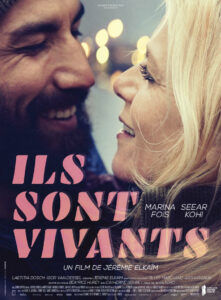Share
Food is more than nutrients to make our body function, it is also about emotions, feelings, and sharing. Food has the power to reunite people, create relationships and convey emotions. It also represents cultural identity and history. Through your cook, we can husk your backgrounds, travels, and origins. Mostly for migrant communities, cooking and eating traditional dishes help them to fill the gap of their homelands. Food help migrant to remind where they come from and who they truly are. It brings a taste of your motherland in your newly settled country, which means bringing some comfort to them.
Due to globalization, you find everywhere, restaurants from different countries and cultures. It has brought all countries food in our western’s cities. You could eat Indian, Spanish, Greek or even Vietnam dishes. Besides, eating Asian food has become easier, and Thai cuisine has become the most popular worldwide Asian food. Due to the aromatic, the spice, and the complexity of the balanced flavors. Thai restaurants are everywhere you go. However, each province and region in Thailand has its specialties and different way of cooking. Where my mom comes from, in the Northeast, the Isan community cooks with fermented fish sauce, very hot pepper, and they only eat sticky rice. Whereas, near Bangkok, the capital region, people eat less spicy, more curry, jasmine rice, and lots of lemongrass-flavored broth. Moreover, in the Chiang Mai area, people are more ก๋วยเตี๋ยว (noodle soup) eaters. All these differences in cooking and flavors in only one nation can be explained by historical migration. For example, Bangkok’s cuisine was mostly influenced by the migration of the Chinese community.
Thai restaurants in Europe, America, or outside of Thailand only prepare special dishes from the capital region. On top of that, all traditional dishes are westernized. Moreover, the head chef and owners of Thai restaurants in European countries such as Belgium are most of the time Vietnamese, Filipino, or from another Asian country. Because of the hype of Thai cooking, they chose to serve Thai food. They say it attracts more clients when it is written:” Thai restaurants” on the facade. So, it is hard for my mom to go out to eat as an Isan. On one hand, it is because she tells me: “It is not that I don’t like Thai food, I just prefer Isan dishes, so it is easier to go to the grocery and cook for myself”. On the other hand, because they are not Thai citizens the food doesn’t taste the same as in Thailand, she says.
Fortunately, transnationalism brings all my mother needs to cook her hometown dishes. But all ingredients have a price, and it is so costly compared to the price in Thailand. It is most of the time ten times more expensive. My mom is aware that she is a privileged one because she can afford all the ingredients she needs and drives to specific shops where she has much variety and choice of products. But my mom is wise and she is not a spendthrift. For example, she never buys exported fruits and vegetables, because they are overpriced. Obviously, she can’t cook or eat precisely like in Thailand, but thanks to globalization, she is able to bring some hometown taste to Belgium.
It is well known, food affects our body, but also have a huge impact on our mind and sense. Food has a strong psychological impact. If my mom doesn’t eat sticky rice, ส้มตำปูปลาร้า (Papaya Salad with Crab and Fermented Fish) and chilly, she gets anxious, stressed, and most of the time she says: “I have to eat sticky rice and chilly otherwise I will pass out.” She gets very nervous and angry; I would even say “Hangry”. The relationship, she has with food goes way more than nourishing her body and eating tasty food, it is about bringing her comfort, memories, and love.
I will conclude by saying:” อาหารไทยอร่อยมาก”!



Average Rating